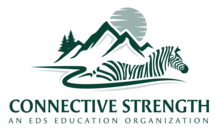Speaker: Ryan Walter
Introduce yourself
Ryan Walter: Hi, my name is Ryan Walter. I'm a lead therapist of Hands for Living in Redmond. We do have a second clinic in Lynwood as well. Prior to working at Hands for Living or working in the hand therapy specialty. I've worked in multiple different areas of occupational therapy practice. I've really, we enjoy working with people with connective tissue disorders including hyper mobility spectrum disorder or EDS. It's provided a lot of challenges and intricacies that provide me the ability to treat patient centered, which is my primarily goal in practice.
What do you specialize in?
Ryan Walter: I'm an occupational therapist and certified hand therapist. My primary specialty is splinting. I have made thousands of custom orthosis. My primary goal with creating a custom orthosis is the comfort and the function for a patient. A lot of times the patient may not require a custom orthosis. They may require something that's kind of a mix or a hybrid between custom or prefab. This may include silver ring splints, many different things. But my, goal with working with patients is creating a personalized approach to care.
What is your approach to your practice?
Ryan Walter: My approach to practice revolves around three main proponents of care. The first one is external supports or splinting. A lot of times we may fabricate splints to provide better function and more stability for daily tasks. This is really dependent on what the patient is looking for. Some people need more stability for being able to write or do artwork or be able to do many things throughout their daily life. This can be custom prefabricated, silver ring splints, et cetera. The second main component of care is internal stability or internal internal supports. This may include the Malian Protocol for strengthening. This may include strengthening through many different exercises. But the main proponent with that is that we're not creating pain or not creating a flare up as we're doing so. And the last proponent is education, education may revolve around activity modification. A better outlook on what's going on with their condition and providing additional resources for support groups or other other resources in the community.
What is unique about Connective Strength?
Ryan Walter: Connective strength has not only been a fantastic resource for our clinic, but it has provided a great sense of community within the people that we see within our clinic. This is not only just a support group, but this is a place where people can gain more education on and on many different types or things that they're going through with their condition or not going through with their condition. But the, the language of handouts and language of things is written in a patient perspective that is really approachable for people. And a lot of times that things that other people have gone through is something that they can connect with.
